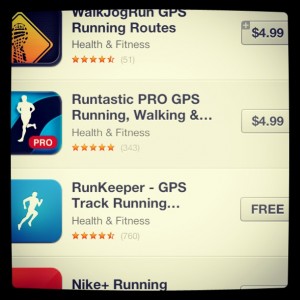28 Aug Communicate Practicality to Achieve mHealth Application Success
 Have you ever downloaded a fitness tracker, food journal, sleep aid or health monitoring application on your smartphone? If so, you’re among the 19% of mobile users in the US who has done so. It is estimated that by 2017, 50% of mobile users will be using mHealth applications like these.
Have you ever downloaded a fitness tracker, food journal, sleep aid or health monitoring application on your smartphone? If so, you’re among the 19% of mobile users in the US who has done so. It is estimated that by 2017, 50% of mobile users will be using mHealth applications like these.
Of your downloaded health applications, how many have you used consistently? Studies show that 26% of all downloaded applications were opened only one time. 79% of users will give an application a second chance, and only 16% of users will go back to an application for a third time if they didn’t initially find it useful.
Why do so many people download these applications and walk away?
The practicality gap
Regardless of how interesting a new innovation is, if it lacks practicality, it stands a lesser chance for adoption than one that can be easily integrated into existing habits. If an innovation requires a person adopt a new behavior or set of behaviors, chances are that the innovation will not be embraced. This is called the practicality gap.
As related to modern innovation in general, we are seeing a trend toward this type of practicality. In the mHealth marketplace specifically, users download an array of applications, but only really adopt those that dovetail into everyday behaviors and streamline already existing habits.
The marketer’s challenge
With over 800,000 applications in the iPhone store, and more than 700,000 in the Android marketplace even the most useful application can get lost in the noise without the right kind of promotion. Marketers of apps need to create awareness about the application, move people to download it, keep users engaged with the application over time, and encourage fans to write positive reviews to sustain momentum.
Marketing applications the right way, at the right time, to the right audience will be key to the success of an application.
Close the practicality gap in marketing apps
Instead of focusing merely on the features of an application, focus on the usefulness of those features for the target audience. Questions to inform messaging might include:
- Target audience: How will the application help the user streamline current habits?
- Mechanics: How is the application used? What are the features?
- Work: How easy is the application to use? How much time does it require? Do the required actions feel like free will, or work?
- Reward: What are the benefits of consistency?
- Personalization: How can users personalize their experience? What are the benefits of personalization?
- Community: Does the application provide the user with a sense of community, or support around a habit?
- Emotional outcome: What emotional response does the application create? (For example: motivation, accomplishment, anger, or guilt.)
- Behavioral change: What new habits or behavioral changes will your application help a user achieve?
By communicating how a mobile application will help users simplify their existing habits, marketers will be better able to reach the right people, which will in turn increase adoption and long-term application retention.






